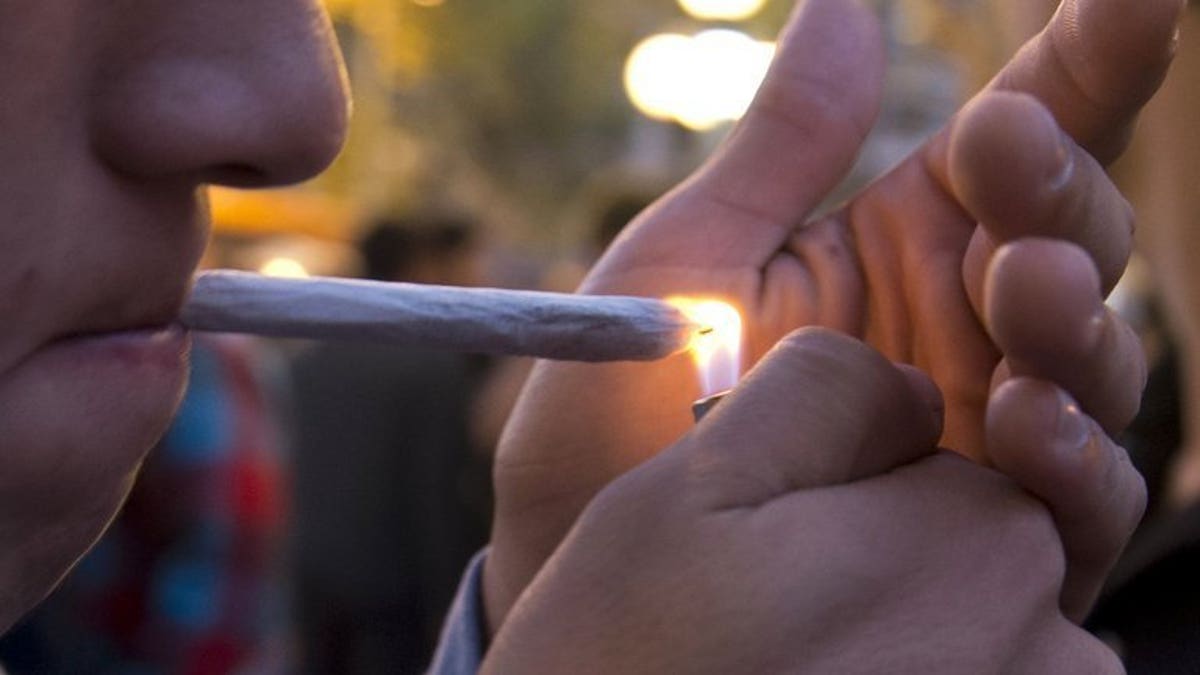
A man lights a marijuana joint during a demonstration demanding a new law on cannabis in Montevideo on May 8, 2013. NGOs argue that "marijuana use has doubled in the last 10 years" in the small, mostly rural South American country of 3.4 million. (AFP/File)
More and more Americans are admitting they use marijuana, and a new study suggests this may be due at least in part to the growing number of people who don't think it's dangerous.
Researchers surveyed almost 600,000 U.S. adults from 2002 to 2014 about their drug use and health. Marijuana use increased from 10.4 percent of adults to 13.3 percent during the study period, researchers report in The Lancet Psychiatry.
Over the same period, the proportion of adults who thought there was a great risk of harm associated with smoking pot once or twice a week declined from about 50 percent to 33 percent.
"Despite scientific evidence of potential harms, adults are much less convinced about dangers associated with using marijuana," said lead study author Dr. Wilson Compton, deputy director of the National Institute on Drug Abuse (NIDA).
"These reductions in perceived harm were strongly associated with the increases in use," Compton added by email.
Marijuana is the most commonly used illicit drug in the U.S., according to NIDA.
Short-term effects of using this drug can include mood changes, impaired body movements and difficulty with thinking, problem solving and memory. Over time, the drug can also lead to breathing challenges, increased heart rate and a range of mood disorders.
Overall, marijuana use by U.S. adults increased more than 30 percent in the past dozen years, the study found, with 10 million more people using pot in 2014 than in 2012.
Use of marijuana on a daily or near-daily basis increased even more markedly.
In 2002, 3.9 million adults in the U.S. reported using marijuana daily or nearly every day. By 2014, that number had more than doubled to 8.4 million.
"Physicians need to be aware of these changing patterns of marijuana use to guide health care, and additional research needs to be conducted to study the consequences - both acute and long-term - that may be associated with frequent, heavy use," Compton said.
Both the prevalence and frequency of marijuana use increased starting around 2007 and showed significantly larger spikes after 2011, the study found.
During the study period, a growing number of U.S. states adopted legislation legalizing marijuana for medical purposes and, in some instances, for recreational use.
As of 2015, 24 states and the District of Columbia had passed medical marijuana legislation, the study authors note.
Meanwhile, many countries outside the U.S. including Canada, India, Mexico, Spain, Germany and the Netherlands have decriminalized possession of small quantities of marijuana, the authors also point out.
"The message that adults are not getting is that marijuana is a drug and, like all drugs, can harm some users when it is used in certain ways," said Wayne Hall, director of the Center for Youth Substance Abuse Research at the University of Queensland in Brisbane, Australia.
"Like alcohol, it can when used daily over substantial periods of time produce dependence and seriously interfere with some adults' health and well-being," Hall, author of an editorial accompanying the study, said by email.
